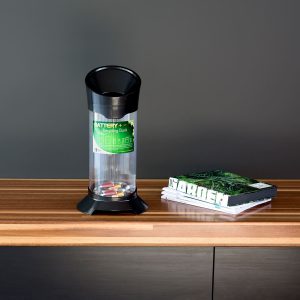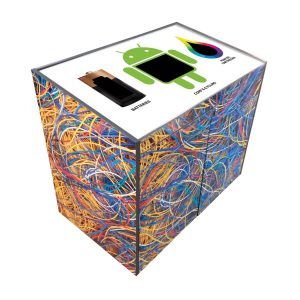
July 14, 2015
The E-Waste Epidemic
Electronic waste (E-Waste) is becoming a key focus for many businesses and councils aiming to further improve their sustainability. When you consider the increasing volumes of e-waste, comparatively low recycling rates and environmental impacts of e-waste, this focus is not surprising.
 Australians love our technology, flocking to adapt new technology and go digital faster than most other developed countries. However this passion has resulted in our E-Waste growing at approximately three times the rate of general waste. In fact, according to the Australian Packaging Covenant, there is currently about 16.8 million TVs, Printers, Computers and related accessories disposed of annually, an estimated 106,000 tonnes, of which only 30% is recycled responsibly.
Australians love our technology, flocking to adapt new technology and go digital faster than most other developed countries. However this passion has resulted in our E-Waste growing at approximately three times the rate of general waste. In fact, according to the Australian Packaging Covenant, there is currently about 16.8 million TVs, Printers, Computers and related accessories disposed of annually, an estimated 106,000 tonnes, of which only 30% is recycled responsibly.
The risk of E-Waste in landfill is well understood by those in the industry, although community awareness needs improvement. E-waste when buried in landfill, is toxic, leaching dangerous metals such as lead, mercury and cadmium into the surrounding soil and groundwater. Research has linked such heavy metals to health effects such as tumors, mental health disorders and cancer. The good news is that recycling electronic equipment is relatively easy, with over 90% of most items being able to be recovered for reuse. That’s a significant proportion of recovery, which can play a role in reducing our reliance on mining finite raw materials, and in turn reduce the environmental impact of mining.
As a result of the increasing waste volumes, and poor recovery rates, e-waste is now a focus for many local councils and businesses. Local councils are seeking solutions to improve the recycling rates of E-Waste in their communities, through both better facilities and improved education. Local libraries, council chambers and community venues are becoming hubs for the collection of small E-Waste items such as batteries, mobile phones and accessories. Businesses, particularly those in the electronic industry, are wanting to lead the environmental response to e-waste, and following Europe’s lead, some leading organisations are looking to implement take-back E-Waste stations at the point of sale. In Australia this is currently most predominant with Mobile Muster campaigns in telecommunication stores, however such programs are expanding.
Whilst custom designs are sometimes the solution, Source Separation Systems have launched a product specifically for E-Waste. This ‘E-Waste Recycling Station’ features a modern timber veneer design, which supports a stainless steel recycling plate. This recycling plate, available in four designs, features differentiated apertures and coloured graphics which immediately enable the user to identify the waste streams collected.
The station brings together in a single unit, recycling solutions for batteries, phones, printer cartridges and computer accessories. The unit can be also customised, with both new cabinetry to complement the space, or for specific waste items, or recycling messages. Designed for indoor public spaces, the station, with such bright catching visual features, functions as both a recycling bin, and importantly an educational tool to promote increased E-Waste recycling.
So now you have had time to count your E-Waste, what is your household’s total number? After some debate, our team have all exceeded 20!